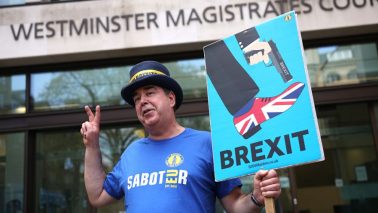The Paris World’s Fair of 1937 was more than a testing ground for artistic innovation; it was a battleground for political ideologies. The Imperial eagle spread its wings over the German Pavilion; the Soviet hammer swung above the Russian Pavilion; and the Spanish Pavilion unveiled Picasso’s shocking monument to the civilian dead of the bombed city of Guernica, raising the clenched fist of the Spanish Republic in the capital of non-interventionist France.
Not everyone was convinced by ‘Guernica’ as art. Anthony Blunt in The Spectator commended Picasso’s political gesture but dismissed the painting as ‘the expression of a private brainstorm’. Piqued on the artist’s behalf, the British surrealist Roland Penrose, who had seen the work in progress, arranged to have it exhibited in London at the New Burlington Galleries and the Whitechapel Art Gallery, where it attracted 15,000 visitors and £250 in donations for a food ship for Spain. In Paris the Spanish finance minister had compared the picture’s propaganda value to ‘a military victory on the front’: in London it furnished heavy artillery to the British avant-garde’s campaign against traditional realist art.
‘Guernica’ casts a long shadow over Conscience and Conflict: British Artists and the Spanish Civil War, the first exhibition to examine this overlooked subject. On the Spanish side the show fields some sample Picassos — two ‘Weeping Woman’ images and ‘The Dream and Lie of Franco’ satirical prints. On the British side the big hitters are Henry Moore and Wyndham Lewis — batting half-heartedly for the nationalist team — but most of the names are less familiar, in keeping with Pallant House Gallery’s continuing mission of introducing us to modern British artists we don’t know, but should.
As the biggest contingent, the surrealists get a room to themselves.








Comments
Join the debate for just £1 a month
Be part of the conversation with other Spectator readers by getting your first three months for £3.
UNLOCK ACCESS Just £1 a monthAlready a subscriber? Log in